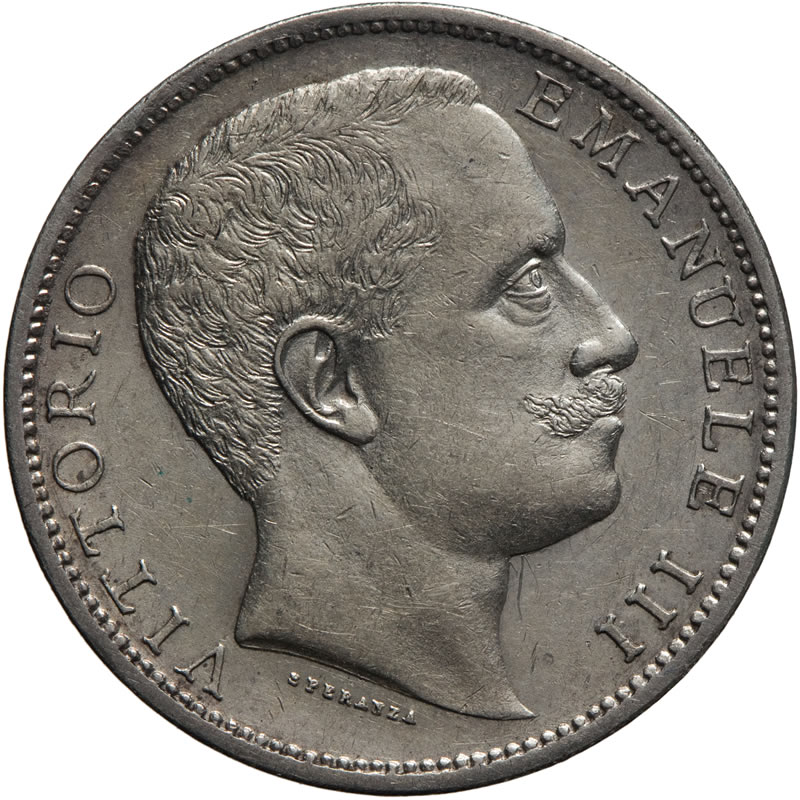Following the tragic events of July 29th 1900, after which the Prince of Naples ascended to the throne, the competent members of the Ministry for the Treasury gave all the instructions needed for the preparation of the coins with the effigy of the new king: Victor Emmanuel III. For the young king, who was already keen on numismatics, the preparation of his coins had to be a very special event. He wanted to take the distance from the usual style with the profile head and the crowned coat of arms. So, in November 1900, he called the chief engraver of Rome’s mint, Filippo Speranza, to discuss his ideas and give a personal touch to his own coinage. The old engraver and sculptor, an excellent engraver technician according to the artisan methods of the time, who had started working for the Roman mint in 1869 with Pius IX, was responsible for the artistic production of all the coins of Victor Emmanuel’s two predecessors. After many contrasts and discussions, the final model to be used for the 5 lire scudo was approved.
Victor Emmanuel wrote about it to Egidio Osio, his educator and “numismatic father”, in a letter dated March 9th 1901 to which he attached a copy of the coin as a gift. “As promised, I’m sending you a scudo with my effigy. Yesterday, I received the first samples. This coin will soon be rare as very few will be cast, since in France they are used as gold. We decided to cast it so that we could have coins with a larger diameter. The other coins are mechanically obtained thanks to a copying machine. Soon, we will cast the £ 2, the Lira and the £ 20. I think the engraving on the £ 5 is pretty good and I think you will appreciate the Savoy eagle that I have had drawn.”
In the next auction that will be held in Genoa on May 16th, a series of 2 lire with the Savoy eagle will be presented, which include three very rare years: 1901, 1903 and 1904. According to some mint documents of 1901, 72,467 coins were cast. In 1903, only 53,622. Many of them were withdrawn between 1917/1918 and then melted in order to cast the following series.
994 Views |
Like

